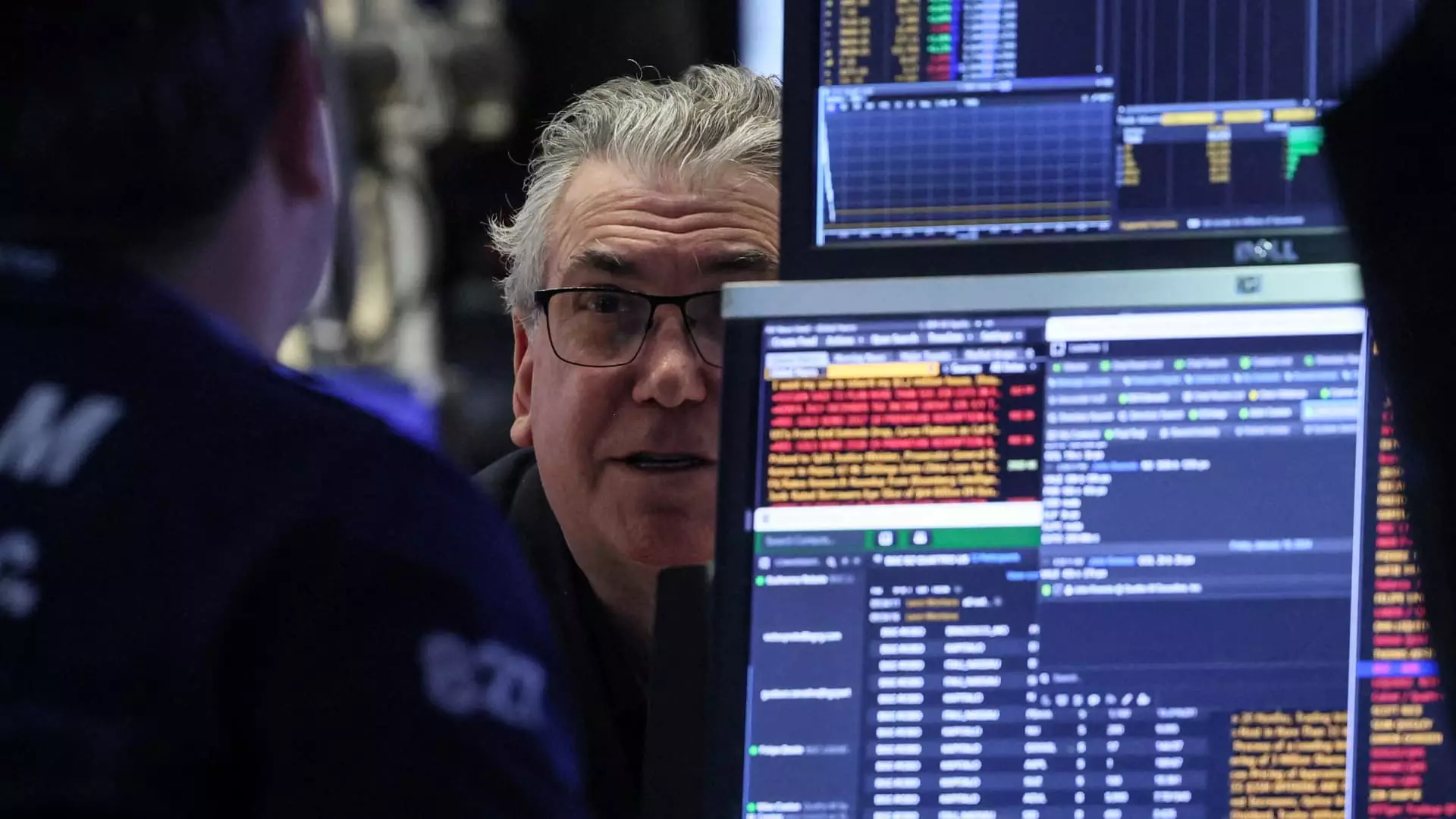The Federal Reserve’s stance on interest rate cuts has been a hot topic among market participants, with uncertainty prevailing. Two significant economic reports scheduled for this week could provide crucial insights into the direction the central bank policymakers may lean and how the markets will react to a potential turn in monetary policy. These reports are highly anticipated and are expected to have a significant impact on the economy and the stock market.
On Thursday, the Commerce Department will release its initial estimate of the fourth-quarter economic growth for 2023. Economists surveyed by Dow Jones are predicting a modest growth rate of 1.7% for the final three months of 2023. If this prediction holds true, it would signify the slowest growth since the 0.6% decline experienced in the second quarter of 2022. This report will provide a comprehensive overview of the overall economic performance and will serve as a significant factor in influencing the Fed’s monetary policy decisions.
One day later, the Commerce Department will release the December reading of the personal consumption expenditures price index, a key inflation gauge closely monitored by the Federal Reserve. The consensus among economists is that the core PCE prices, which exclude food and energy components, will grow by 0.2% for the month and 3% for the full year. These inflation numbers carry significant weight in determining the Fed’s rate path and their decisions on monetary policy. While the numbers are trending towards the Fed’s desired 2% inflation goal, achieving it remains elusive.
Chicago Fed President Austan Goolsbee emphasizes the importance of these data points in determining the Fed’s rate path. He highlights that it’s fundamentally about the data and clear evidence that inflation is on track to reach the target. Goolsbee notes that market participants should closely monitor the inflation numbers to gain insights into the Fed’s future decisions. The releases this week will reveal whether the Fed will continue with its current restrictive stance or move towards a more accommodative monetary policy.
Changing Sentiment in the Market
The market sentiment concerning the Fed’s next moves has seen a recent shift. As of Friday afternoon, the trading in the fed funds futures market indicated that there was almost no chance of an interest rate cut at the upcoming Jan. 30-31 meeting of the Federal Open Market Committee. This change is not surprising, but what is noteworthy is the declining odds of a rate cut in the March meeting, which have fallen from 81% to 47.2% in just one week. Additionally, traders have adjusted their expectations, reducing the outlook for easing to five quarter percentage point decreases instead of the previously predicted six.
Factors Influencing Monetary Policy Expectations
Several factors have contributed to this change in sentiment. Stronger-than-expected growth in consumer spending for December and a decrease in initial jobless claims have bolstered the market’s confidence. Moreover, several influential Fed officials, including Governor Christopher Waller, New York Fed President John Williams, and Atlanta Fed President Raphael Bostic, have stated that they are in no hurry to cut rates, even if they believe the tightening cycle has likely ended. These factors have collectively shifted the expectations and have made market participants reconsider their predictions.
Managing Inflation and Housing Cost Concerns
Goolsbee reveals that he closely monitors housing inflation as a crucial area of concern. The December consumer price index report indicates that shelter inflation, which constitutes a significant portion of the CPI, has risen by 6.2% compared to the previous year. However, alternative measures, such as the New Tenant Rent Index, suggest a different trajectory for housing inflation. This index, which measures prices for new leases, indicates a decline of 4.6% in the fourth quarter of 2023 from a year ago. These contrasting views on housing inflation complicate the analysis of future monetary policy decisions.
Economists at Citigroup anticipate that the inflation data will align with the Fed’s dovish plans in the short term. However, they believe that inflation will remain stubborn and may cause a delay in the first rate cut until at least June. Ultimately, the timing and magnitude of the rate cuts might not significantly impact market outcomes. Nevertheless, market expectations for monetary policy have shown strong correlations with market performance. Factors such as the stock market rally, geopolitical tensions, and unexpected economic growth will continue to influence market reactions and shape the Fed’s decisions.
The Possibility of a reversal in Monetary Policy
Komal Sri-Kumar, the president of Sri-Kumar Global Strategies, raises an intriguing thought: could the Federal Reserve be forced to raise the Federal Funds rate instead of cutting it? Economic and geopolitical developments that could potentially trigger an upturn in inflation may shift the Fed’s stance. These developments could exert upward pressure on both short-term rates and long-term yields. While such a scenario may seem far-fetched, it is crucial to consider all possibilities in an ever-changing economic landscape.
The market’s confidence in Fed rate cuts has wavered recently, with various economic indicators and statements from Fed officials contributing to the shifting sentiment. The upcoming economic reports on fourth-quarter growth and inflation will play a significant role in shaping the central bank’s monetary policy decisions. Market participants eagerly await these releases, as they will provide crucial insights into the potential direction of interest rates and the broader economy. It remains to be seen whether the Fed will continue its cautious approach or adopt a more accommodative stance to revive economic growth.


Leave a Reply